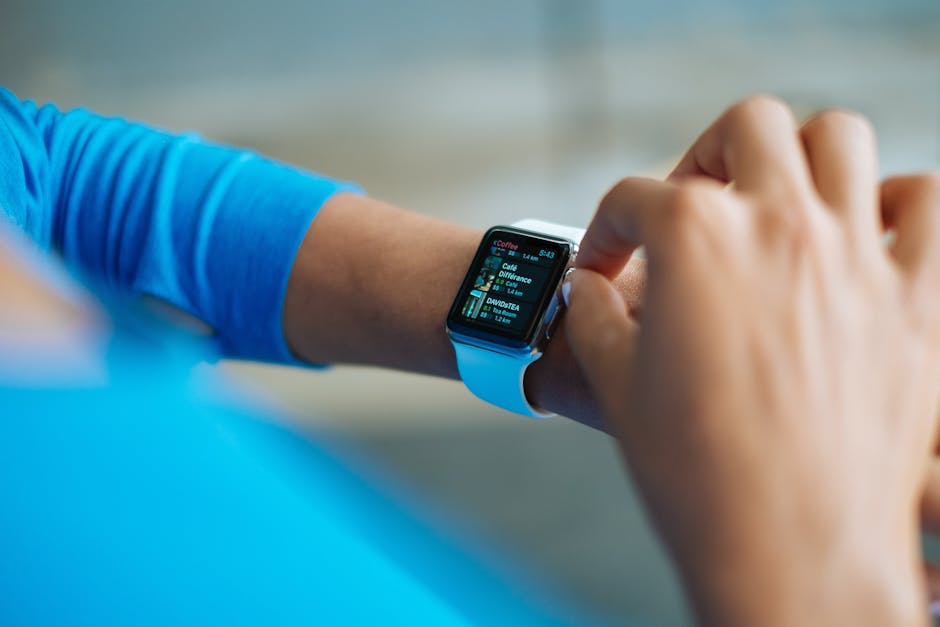The year is 2025. The lines between technology and our bodies have blurred even further. Wearables are no longer a novelty; they are an integral part of our daily lives. From enhancing athletic performance to monitoring vital health signs, from streamlining communication to augmenting our reality, “wearables feedworldtech” in ways unimaginable just a few years ago. This article explores the current landscape of wearables in 2025, diving into the latest trends, practical applications, and what to expect in the near future.
The Evolution of Wearables: A 2025 Perspective
The journey of wearables has been remarkable. Early iterations focused primarily on fitness tracking, counting steps and monitoring heart rates. However, advancements in sensor technology, artificial intelligence, and material science have transformed wearables into sophisticated, multi-functional devices.
In 2025, we see a refined ecosystem of wearables, encompassing smartwatches, augmented reality glasses, smart clothing, implantable devices, and even advanced biosensors that seamlessly integrate with our bodies. “Wearables feedworldtech” with real-time data, providing invaluable insights and driving innovation across various sectors.
Key Trends Shaping Wearables in 2025
Several key trends are driving the development and adoption of wearables in 2025.
1. Enhanced Health Monitoring and Personalized Medicine
Wearables are revolutionizing healthcare by providing continuous monitoring of vital signs, activity levels, and sleep patterns. Advanced sensors can now detect biomarkers for early disease detection, allowing for proactive interventions and personalized treatment plans.
For example, smart patches can monitor glucose levels for diabetic patients, while wearable ECG monitors can detect atrial fibrillation and other heart irregularities. This data, combined with AI-powered analytics, enables healthcare providers to deliver more effective and targeted care. Learn more about the current state of wearable tech in healthcare at this New York Times article.
2. Augmented Reality (AR) and Mixed Reality (MR) Integration
AR glasses and headsets are becoming increasingly sophisticated, offering immersive experiences and practical applications in various fields. From remote collaboration and training to gaming and entertainment, AR/MR wearables are transforming how we interact with the digital world.
Imagine surgeons using AR glasses to visualize patient anatomy during complex procedures or engineers collaborating on a virtual prototype using MR headsets. The possibilities are endless, and “wearables feedworldtech” with the ability to seamlessly blend the physical and digital realms.
3. Smart Clothing and Biometric Integration
Smart clothing embedded with sensors and actuators is gaining traction in sports, fitness, and healthcare. These garments can track muscle activity, monitor posture, and even deliver targeted electrical stimulation to improve performance or aid rehabilitation.
Furthermore, biometric sensors woven into fabrics can provide continuous monitoring of physiological data, such as heart rate variability and skin temperature, offering valuable insights into stress levels and overall well-being. The integration of these technologies opens new avenues for personalized training and proactive health management.
4. Implantable and Ingestible Sensors
While still in their early stages, implantable and ingestible sensors hold immense potential for revolutionizing diagnostics and drug delivery. These devices can monitor internal body functions, detect early signs of disease, and deliver medication directly to targeted tissues.
For instance, implantable glucose sensors can provide continuous glucose monitoring for diabetic patients, eliminating the need for frequent finger pricks. Ingestible sensors can track medication adherence and provide real-time feedback to healthcare providers. These advancements pave the way for more precise and personalized healthcare solutions.
5. The Metaverse and Wearable Interconnectivity
As the metaverse continues to develop, wearables are becoming increasingly essential for seamless interaction within these virtual environments. Haptic suits, VR gloves, and brain-computer interfaces (BCIs) are enabling users to experience immersive and interactive experiences in the metaverse.
These wearables allow us to feel textures, manipulate objects, and even control virtual avatars with our thoughts. “Wearables feedworldtech” with the tools necessary to fully engage in the metaverse, blurring the lines between the physical and digital worlds.
Practical Applications of Wearables in 2025
The applications of wearables are diverse and far-reaching, impacting various aspects of our lives.
- Healthcare: Remote patient monitoring, chronic disease management, personalized medicine, and rehabilitation.
- Fitness and Sports: Performance tracking, personalized training programs, injury prevention, and biometric analysis.
- Industrial Safety: Monitoring worker fatigue, detecting hazardous conditions, and improving workplace safety.
- Gaming and Entertainment: Immersive gaming experiences, virtual reality simulations, and personalized entertainment content.
- Communication and Productivity: Hands-free communication, augmented reality-based collaboration, and streamlined workflows.
Wearable technology is transforming industries, enhancing productivity, and improving overall quality of life.
Also, consider the role app developers play within the wearable tech sphere. Check out appinnovators6 and similar platforms for more information about this crucial aspect.
Challenges and Considerations
Despite the immense potential of wearables, there are several challenges and considerations that need to be addressed.
- Data Privacy and Security: Ensuring the privacy and security of sensitive health data collected by wearables is crucial. Robust security measures and transparent data governance policies are essential.
- Accuracy and Reliability: The accuracy and reliability of wearable sensors must be continuously improved to ensure the validity of the data collected. Calibration and validation studies are essential.
- User Adoption and Acceptance: Overcoming user reluctance and promoting adoption requires user-friendly designs, intuitive interfaces, and clear value propositions. Education and awareness campaigns are crucial.
- Regulatory Compliance: Wearable medical devices must comply with relevant regulatory standards and guidelines to ensure safety and efficacy. Clear regulatory frameworks are needed.
- Interoperability and Standardization: Establishing interoperability standards for different wearable devices and platforms is essential to facilitate data sharing and integration.
Addressing these challenges is critical to unlocking the full potential of wearables and ensuring their responsible and ethical use.
Actionable Advice for Leveraging Wearables in 2025
Here’s some practical advice for individuals and organizations looking to leverage wearables in 2025:
- Stay informed about the latest trends and advancements in wearable technology. Attend industry events, read research publications, and follow thought leaders in the field.
- Identify specific use cases and applications that align with your needs and goals. Focus on areas where wearables can provide tangible benefits and address specific challenges.
- Invest in high-quality wearables from reputable manufacturers. Ensure that the devices are accurate, reliable, and compliant with relevant standards.
- Implement robust data privacy and security measures. Protect sensitive data from unauthorized access and ensure compliance with data protection regulations.
- Provide training and support to users to ensure they can effectively utilize wearables. Offer clear instructions, troubleshooting guides, and ongoing assistance.
- Monitor the performance of wearables and evaluate their impact on key metrics. Track improvements in health outcomes, productivity, safety, or other relevant indicators.
- Collaborate with experts in wearable technology, data analytics, and healthcare to develop innovative solutions. Leverage external expertise to accelerate development and maximize impact.
The Future of Wearables: Looking Beyond 2025
The future of wearables is incredibly promising. We can expect to see even more sophisticated sensors, more powerful AI algorithms, and more seamless integration with our lives.
In the coming years, wearables may evolve into fully personalized AI assistants, capable of anticipating our needs, providing proactive support, and enhancing our cognitive abilities. Brain-computer interfaces may become more mainstream, allowing us to control devices and interact with the world using our thoughts.
The integration of wearables with the metaverse will create new opportunities for immersive experiences, remote collaboration, and virtual learning. Furthermore, wearables may play a crucial role in addressing global challenges such as climate change, resource scarcity, and public health crises.
For real-time analysis of wearable technology and its influence on the future, it is worth reading articles from recognized news agencies like this one from BBC News.
FAQ: Wearables Feedworldtech in 2025
What are the biggest advancements in **wearable tech** for 2025?
The biggest advancements revolve around enhanced health monitoring with implantable sensors, augmented reality integration for seamless information overlays, and smart clothing capable of biometric analysis.
How will **wearables** improve **healthcare** in 2025?
Wearables will enable remote patient monitoring, personalized medicine through biomarker detection, and proactive interventions based on real-time data analysis, ultimately improving patient outcomes and reducing healthcare costs.
What are the main **data privacy concerns** associated with **wearables** in 2025?
Concerns include the potential for unauthorized access to sensitive health data, the use of data for discriminatory purposes, and the lack of transparency in data collection and usage practices.
How will **wearables integrate** with the **metaverse** in 2025?
Wearables will serve as essential interfaces for interacting with virtual environments, enabling immersive experiences through haptic feedback, motion tracking, and brain-computer interfaces.
What are some **practical tips** for choosing the right **wearable device** in 2025?
Consider your specific needs and goals, research reputable brands, read reviews, compare features, and prioritize data privacy and security.
Conclusion
Wearables are not just a trend; they are a fundamental shift in how we interact with technology and the world around us. In 2025, “wearables feedworldtech” by providing real-time data, enhancing our capabilities, and improving our quality of life. As technology continues to advance, the possibilities for wearables are limitless. By staying informed, addressing challenges, and embracing innovation, we can unlock the full potential of wearables and create a healthier, more productive, and more connected future.


















